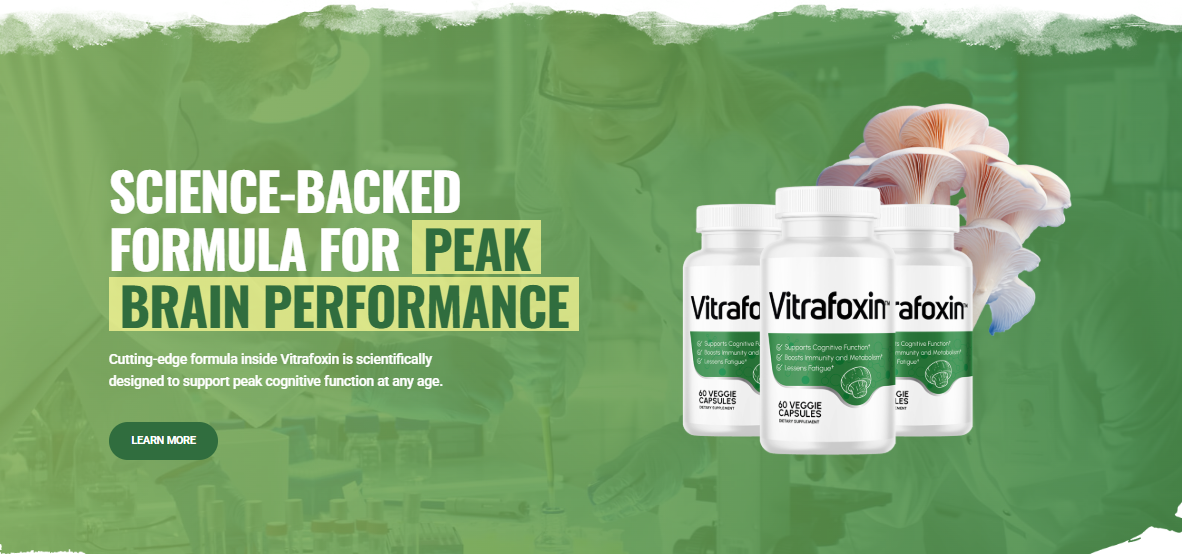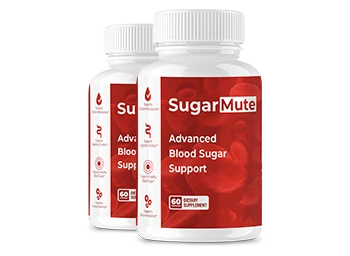Introduction
In the ever-evolving world of neuroscience and cognitive pharmacology, the search for a safe and effective cognitive enhancer has led to many breakthroughs. One of the latest and most talked-about advancements in this field is Vitrafoxin Reviews. Touted by some as a “neurochemical revolution,” Vitrafoxin is gaining attention in scientific, medical, and even biohacking communities due to its proposed ability to enhance memory, improve focus, regulate mood, and possibly provide therapeutic benefits for neurological disorders.
Though still in its early phases of clinical testing and adoption, Vitrafoxin has generated excitement due to promising preliminary data and anecdotal evidence. But, as with any drug or supplement that targets brain chemistry, it’s essential to explore both the benefits and the potential risks.
This article dives deep into what Vitrafoxin is, how it purportedly works, its proposed applications, pros and cons, current research, and future implications.
Get More for Less: Vitrafoxin Discount Plus Free Shipping!
What is Vitrafoxin?
Vitrafoxin Brain Supplement is a synthetic neuro-modulatory compound designed to influence neurotransmitter activity, specifically targeting dopamine, serotonin, and acetylcholine pathways. Developed by a European biotech startup in collaboration with cognitive neuroscientists, Vitrafoxin Reviews was initially intended as a treatment for mild cognitive impairment (MCI) and early-stage Alzheimer’s disease. However, during pre-clinical trials, researchers noted that even healthy test subjects exhibited enhanced executive function, working memory, and improved emotional regulation.
The compound belongs to a class of drugs known as selective neuroplasticity enhancers—agents that promote synaptic growth and neural efficiency without overstimulating the central nervous system. Unlike traditional stimulants, Vitrafoxin does not cause jitteriness or dependency, according to early data. Instead, it subtly improves cognitive functions while promoting long-term neural health.
Mechanism of Action
Vitrafoxin’s primary mechanism revolves around modulating synaptic plasticity. It influences the release and reuptake of several key neurotransmitters:
-
Dopamine: By partially inhibiting the dopamine transporter (DAT), Vitrafoxin allows more dopamine to remain in synaptic clefts, which contributes to improved motivation, alertness, and reward processing.
-
Acetylcholine: Enhances cholinergic transmission, which supports memory formation, learning capacity, and attention span.
-
Serotonin: Mildly upregulates serotonin receptors, offering a mood-stabilizing effect without inducing sedation.
-
BDNF (Brain-Derived Neurotrophic Factor): Preliminary research indicates that Vitrafoxin increases BDNF expression, promoting neurogenesis and repair.
The compound does not produce the rapid-onset high of amphetamines or the flattening calm of benzodiazepines. Instead, users describe a gradual sharpening of thought, heightened emotional resilience, and a sustained sense of mental energy.
Buy 2, Get 1 Free – Limited-Time Vitrafoxin Offer!
Applications and Potential Benefits
1. Cognitive Enhancement in Healthy Individuals
Early clinical trials and anecdotal reports from university students, software engineers, and creative professionals suggest that Vitrafoxin may significantly improve:
-
Working memory
-
Verbal fluency
-
Focus and concentration
-
Multitasking ability
-
Creativity and mental flexibility
These attributes have led to its off-label popularity among “nootropic enthusiasts” and professionals in high-pressure environments.
2. Therapeutic Use in Neurological Disorders
Several trials are underway to assess Vitrafoxin’s efficacy in treating:
-
Alzheimer’s Disease and MCI: Slows cognitive decline by preserving acetylcholine levels and stimulating neuroplasticity.
-
ADHD: Offers improved attention and impulse control without the side effects associated with traditional stimulants.
-
Depression and Anxiety: By modulating serotonin and dopamine, Vitrafoxin may serve as an adjunct treatment for mood disorders.
3. Post-Traumatic Brain Injury (TBI)
Some preliminary studies indicate a role in improving cognitive recovery in TBI patients, possibly by encouraging neural regeneration.
Boost Your Brain & Save Big – Vitrafoxin 30% Off Today!
Pros of Vitrafoxin
1. Multi-Neurotransmitter Modulation
Unlike traditional nootropics that act on a single neurotransmitter system, Vitrafoxin works synergistically across dopamine, serotonin, and acetylcholine systems, potentially offering a more holistic improvement in cognitive performance.
2. Non-Stimulant Profile
One of the standout benefits of Vitrafoxin is its non-stimulatory nature. It doesn’t produce the crash, tolerance, or dependency risks seen with Adderall or Ritalin, making it appealing for long-term cognitive support.
3. Neuroprotective Properties
Vitrafoxin appears to increase BDNF levels and reduce oxidative stress, suggesting it may actually protect the brain from age-related degeneration or environmental insults.
4. Low Risk of Abuse
Preclinical data and early human trials show no signs of euphoria, reinforcing behavior, or compulsive use, indicating a low risk for abuse and addiction.
5. Potential Mood Stabilizer
For individuals with mild depression or anxiety, Vitrafoxin Reviews Complaints may offer a subtle mood-lifting effect without the emotional blunting sometimes associated with SSRIs.
Buy Now & Save 30% – Limited Time Only!
Cons of Vitrafoxin
1. Limited Long-Term Data
The biggest caveat with Vitrafoxin is the lack of long-term safety data. Since it’s relatively new, there’s still uncertainty regarding chronic use, particularly in healthy individuals.
2. Variability in Response
Some users report dramatic cognitive improvements, while others feel no noticeable effect. This inconsistency may be due to genetic polymorphisms, baseline neurotransmitter levels, or other medications.
3. Potential Side Effects
Though milder than stimulants, side effects may include:
-
Headache
-
Nausea
-
Insomnia (especially when taken late in the day)
-
Mild irritability
-
Occasional dizziness
4. Off-Label and Ethical Concerns
As with all cognitive enhancers, off-label use by students, professionals, and athletes raises ethical questions. Is it fair? Is it coercive in competitive settings?
5. Accessibility and Cost
Currently, Vitrafoxin Complaints is only available in clinical trial settings or private prescription programs. If approved, it may carry a high price tag, making it less accessible to general populations.
Unlock 30% Off Vitrafoxin – Only While Supplies Last!
Current Research Landscape
As of mid-2025, Vitrafoxin is undergoing Phase IIb clinical trials in the EU and United States. Several university research centers are partnering with its developer to explore diverse applications, including:
-
Pediatric use for ADHD
-
Postmenopausal cognitive decline
-
Enhancement of learning in bilingual children
-
Executive function in older adults
Anecdotal feedback collected from early access users is promising but not a substitute for rigorous, peer-reviewed data. Regulatory agencies are proceeding cautiously, particularly after past controversies surrounding off-label cognitive enhancers.
Public Reception and Cultural Impact
Vitrafoxin has already sparked cultural debate. On one hand, it’s seen as the next step in human augmentation—a tool to maximize brain potential. On the other, critics argue it’s another step toward a hyper-competitive society where chemical optimization becomes the norm.
Some tech firms reportedly allow its voluntary use among high-performing teams. A handful of elite universities are monitoring its use quietly among students. Meanwhile, public health experts call for a balanced, evidence-based rollout.
Buy Now & Get 1 Month Free – Vitrafoxin Special Offer!
Comparisons to Other Nootropics
| Compound | Key Mechanism | Risk of Addiction | Cognitive Benefit | Mood Benefit | Cost |
|---|---|---|---|---|---|
| Vitrafoxin | Dopamine + ACh + BDNF | Low | High | Moderate | High |
| Modafinil | Dopamine + Orexin | Moderate | High | Low | Medium |
| Adderall | Dopamine/Norepinephrine | High | Very High | Low | Medium |
| L-Theanine | GABA modulation | None | Mild | Moderate | Low |
| Alpha-GPC | Acetylcholine precursor | None | Moderate | None | Medium |
Legal and Regulatory Status
As of June 2025:
-
Europe: Authorized for limited therapeutic use in Germany and the Netherlands under special neurodegenerative treatment permits.
-
United States: Investigational New Drug (IND) status granted by the FDA; pending Phase III trials.
-
Asia: Not yet approved; some countries like Japan and Singapore have issued warnings against online purchases due to lack of regulation.
Conclusion
Vitrafoxin stands at the intersection of scientific promise and social controversy. As a next-generation cognitive enhancer with a multifaceted mechanism, it offers exciting potential for both therapeutic and performance-boosting applications. It may serve as a beacon of hope for those suffering from neurological disorders, while also tempting healthy individuals seeking a mental edge.
However, until more long-term studies confirm its safety, efficacy, and ethical use, caution is warranted. The future of Vitrafoxin may well depend on how society balances innovation with regulation, aspiration with responsibility.
Boost Your Brain & Save Big – Vitrafoxin 30% Off Today!
Final Thoughts
-
Is Vitrafoxin the future of cognitive enhancement? Possibly, but only if proven safe and effective over time.
-
Should you take it? Not unless advised by a licensed physician and within a regulatory framework.
-
What’s next? More trials, more debate, and possibly, a shift in how we think about brain health.
As science continues to unlock the mysteries of the human mind, Vitrafoxin may either become a cornerstone of cognitive medicine—or a cautionary tale in the pursuit of mental perfection.





Leave a Reply